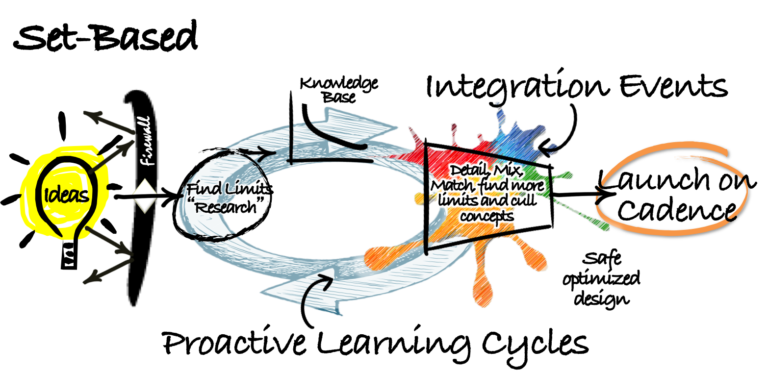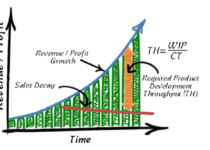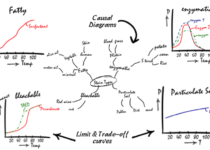Set-Based Product Development
In order to deliver the business objectives, there must be a product development system which effectively and reliable delivers new products to power the revenue and profit objectives of the business.

Knowledge Based Product Development
In the typical ‘stage and gate’ or ‘waterfall’ development systems employed at most western companies there is a fundamental flaw in the methodology, which by its very nature institutes design loop-backs, cost overruns, quality issues and delays. These systems necessitate that requirements are set at the beginning of the development process. By fixing the scope (requirements & specifications), the schedule (launch date) and the resources (project team) it is impossible to deliver all three. The underlying assumption in setting requirements at the onset of a project with a fixed schedule asserts that either the solution is already known, thus not requiring development, or there is nothing new or innovative as a requirement.
In contrast, set-based development establishes a development protocol where the scope and resource commitments are adjusted through a series of proactive learning cycles in the narrowing of solution sets to deliver the optimal product over a set time interval while encouraging innovation and new ideas. Creating ‘Visible’ knowledge is a fundamental aspect of this development system resulting in each new product contributing to the knowledge base, resulting in each subsequent development project becoming more effective and efficient to deliver.
Set-Based or Knowledge Based product development requires an intimate understanding of the customer as requirements are refined through the development process. Thus, ideas enter the system and are subjected to a rigorous battery of evaluations to understand the limits and possibilities. These are refined through proactive learning cycles where the learning contributes to the knowledge base of the organization. Solution sets are narrowed and requirements defined at through integration events between learning cycles.
The proactive learning cycles are pre-established as a part of the planning process. The length of the learning cycles is determined by the design of the development system scoped for the delivery throughput of projects needed to deliver the product plan. The number of learning cycles is predefined by the bin size of the project. Thus the combination of the length of the learning cycles coupled with the number of cycles establishes the time-to-market, or cycle time (CT) of the development system.
At this point all three elements of Little’s Law are known. The Throughput (TH) is established by the needs of the business, the Work-in-Process (WIP) is established by the portfolio plan, and the cycle time (CT) is established by the design of the system in terms of length of learning cycle and number of cycles.
Questions to Consider:
-
Do projects miss their original objectives?
-
Do projects get delayed?
-
Do projects have 'loop-backs' or redesign as a part of the development process?
-
Where in the development process is the majority of work occurring?
-
Is Stage-Gate the defacto development process?


